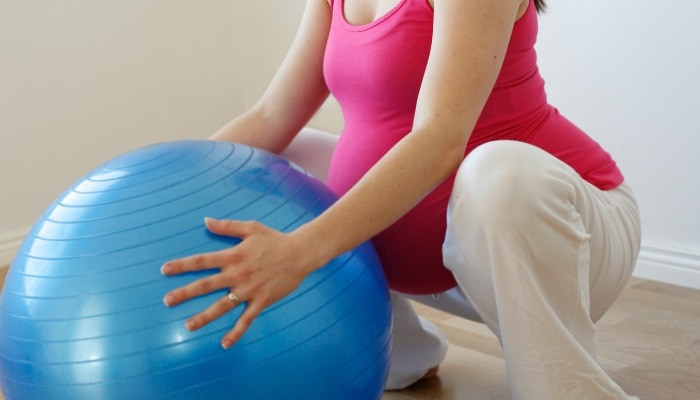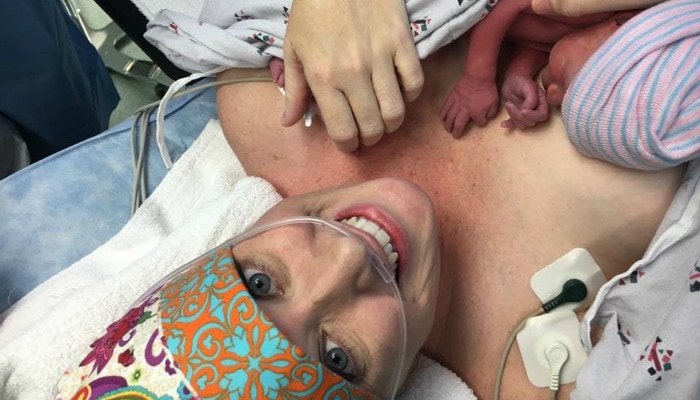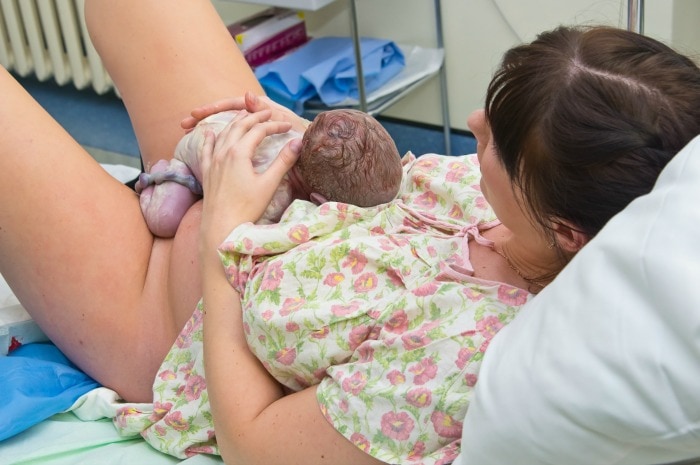In 2012 I wrote an article called 5 Things Your OBGYN Won’t Tell You (About How to Have a Better Birth and Postpartum) and it became very popular. In fact, it went nuts! My first ever traffic spikes were all because of that article. Since then, in my experiences as a childbirth educator, doula, blogger, and mother, I have noticed 5 more things your OBGYN won’t tell you, about how to have a better birth and postpartum that I must share.
Sadly, the majority of the following information will NEVER part of the discussion during the average prenatal appointment or birth. The burden is therefore on the childbearing woman to research, discuss, and advocate for her care and eventually create change in her community.
5 More Things Your OBGYN Won’t Tell You, About How to Have a Better Birth and Postpartum
DISCLAIMER: Before we discuss the 5 more things your obgyn won’t tell you, about how to have a better birth and postpartum, I need to make one thing clear. In no way am I against OBGYNs. I love the profession and I am so glad we have access to the expertise that these doctors bring to maternity care. I also highly respect many of the people in these positions, especially in my own community. Some of Tallahassee’s finest OBGYNs are known for their “magical hands”, ability to turn or deliver breech babies, are open to new policies and procedures, participate in collaborative and evidence based care, and even refer their clients to me. However, the average OBGYN does not operate in this manor.
Without further delay, the following are 5 more things your obgyn won’t tell you, about how to have a better birth and postpartum.
1. How to Prevent Tearing
In my childbirth classes, on the night we talk about pushing, a very important topic ALWAYS comes up. “How to Prevent Tearing During Birth” – An important topic!
According to a local OBGYN, the average first time mother has a second degree tear. I vehemently object – this doesn’t have to be!
Whether you’re planning for a natural birth or a medicated birth, there are at least 5 surprising ways to prevent tearing that will change the way you give birth.
Rethink Squatting
The first thing we need to talk about is squatting. When in the squatting position, compared to being flat on the back, a woman’s pelvis will open 20-30% larger than it would otherwise. Isn’t that amazing?! A greater outlet = an easier birth. So of course, we should squat and push our babies out just like in this video, right? Eh, maybe not.
Shocking fact: Squatting to push INCREASES tearing.
You see, according to this study (and many of the midwives I know), pushing in the squatting position greatly increases the chance of tearing. Squatting, using birth stools or even squatting with a squat bar, all lead to more genital tract damage. Nobody talks about this! And many sources on the internet will even say to squat during pushing to avoid tearing.
In a nutshell, if you are the typical sedentary woman, you probably should rethink squatting during pushing. Unless you’re like the 1970s Southern Brazilian Indian women in this video who SQUATS TO REST, your body likely can’t handle squatting during birth.
(If you’re up to the challenge, go visit Katy Bowman and teach your body to squat.)
The semi-reclined lithotomy position is what most women use when pushing at hospital births. Despite the convenience this position offers care providers, it’s one of the more common mistakes that don’t actually prevent tearing.
On the other hand, Side-Lying, Kneeling or Hands and Knees are positions associated with a reduced risk of perineal damage are lateral positions like a kneeling or hands and knees position.
Midwife Thinking says, “I have noticed that when women are left to birth instinctively they will often move from a squatting position – if they got into one – into a hands-knees position just before the head crowns.”
(That’s exactly what I did for my births. At some point in all my labors I squatted but Gabriel was born in the side-lying position, Eden was born in the kneeling position and Mercy was hands and knees.) So if you really want to squat in labor, go for it, maybe just move to hands and knees before crowning. To read about the 4 other ways to prevent tearing, head on over here.
2. Vaginal Birth After Cesarean (VBAC) Is a Reasonable and Safe Choice
Next on the list of more things your OBGYN won’t tell you, about how to have a better birth and postpartum, is that a vaginal birth after cesarean (VBAC) is an option.
For many women, a VBAC is a reasonable and safe choice. Benefits of VBACs – are:
- a lower risk of some complications such as infections
- a shorter recovery time and hospital stay
- a higher likelihood that you can feed and cuddle your baby straight after birth
- a lower risk of complications during future pregnancies
- that you are more physically able to care for your baby (and any other children you may have) soon after delivery, allowing for quicker bonding. (SOURCE)
However, many OBGYNs, even where I live, do not tell women this. In fact, they go as far to say that VBACs are dangerous and no doctor will do one in the whole city. This is simply not true!
One of the best things a woman can do to is to plug into various micro-communities within her city for information, planning, and support when planning for a VBAC. This is probably one of the best ways to get unbiased information on what’s actually permissible in the area.
Head on over here for more details about planning for a VBAC in your community.
3. Gentle and Family Friendly Cesareans Are a Thing
Next on my list of more things your OBGYN won’t tell you, about how to have a better birth and postpartum, is that there are more gentler, family friendly ways of performing a cesarean delivery.
A gentle c section is a cesarean birth that is heavily focused on supporting the new family, as a unit, throughout the birth process and less on traditional medical procedures and protocol. Families that choose a “gentle cesarean” may opt for things like:
- an additional support person in the OR
- hands to be free and not tied down
- a clear drape so mom can witness the birth
- delayed cord clamping
- skin-to-skin while still in the OR
- family moves to recovery as a unit, instead of experiencing periods of separation
Sounds reasonable, right?
Cesarean Birth Culture
Unfortunately, the birth culture (aka “how we do things around here”) at some hospitals hasn’t changed in decades. Many medical professionals have no plans to do anything different any time soon.
This is so sad. Most women that I work with, on and offline, absolutely positively do not want to have a cesarean birth, however, at some point it sometimes becomes their next best thing. I can’t tell you how much joy it brings to be able to request the things desired and for it to happen, especially when birth is playing out far from what was originally imagined. Sometimes the little things are big things, which matter so much.
To plan a gentle c section two things need to happen.
- The first is to learn advocate for yourself.
- The second is to hire a care provider that wants what you want and can help make it happen.
To read more about a gentle c section and how to make it happen, head on over here.
4. Umbilical Cord Milking ≠ Delayed Cord Clamping
The fourth thing that your OBGYN won’t tell you is that umbilical cord milking ≠ delayed cord clamping. Hang with me and let me explain, because this is really important.
Umbilical Cord Milking
Umbilical cord milking is where the cord is pinched and “milked” immediately following birth in order to quickly push blood into the baby (as you would squeeze ketchup out of a packet, or honey out of a honey stick). Starting as close to the placenta as possible, moving towards the baby, a care provider milks the cord several times before clamping and cutting the cord, usually within 20 seconds. Umbilical cord milking also goes by the term “stripping the cord”.
Delayed Cord Clamping
Delayed cord clamping, on the other hand, is the practice of postponing cutting a newborn’s umbilical cord instead of immediately cutting it after birth. While the transfer of blood happens the care provider’s hands are off the cord and baby is on mom’s abdomen.
In recent years, ACOG and the AAP have both backed the practice of delayed cord clamping at birth for term and preterm infants. (When I began birth work it was a fight for women to have this request granted.)
During the third stage of labor delayed cord clamping is awesome! It…
- Allows babies to have full access to the blood they should have
- Decreases anemia in the first year of life helping babies to get smarter, faster
- Can be done in a minute (preferably 3-5!)
- Can help premature babies stay healthy
- Is what nature intended!
The Problem with Umbilical Cord Milking
In my community, many care providers now provide umbilical cord milking in lieu of delayed cord clamping. On the surface, it makes complete sense. Why wait minutes for blood to make its way to baby if you can push it through in seconds?
However, as you may have already guessed, delayed cord clamping and umbilical cord milking do not provide the same benefits.
To read more about the dangers of umbilical cord milking and what to do instead, head on over here.
5. Pitocin Is Linked to Postpartum Depression
Finally, on my list of five more things your OBGYN won’t tell you, about how to have a better birth and postpartum, is that Pitocin®, a common medication given to a majority of mothers during and after labor, is affecting the mental health of mothers.
Pitocin®, a synthetic form of oxytocin, is routinely given to women before, during and immediately following birth to induce and/or augment labor and to also prevent and treat postpartum hemorrhage. Much to the surprise of the medical community, a recent study showed that Pitocin® is linked to postpartum depression and anxiety.
The mothers aren’t surprised.
For women with a history of depression or anxiety prior to pregnancy, receiving Pitocin® increased the risk of postpartum depression or anxiety by 36%.
For women with no prior history of depression or anxiety, receiving Pitocin® increased their risk of postpartum depression or anxiety by 32%.
Let that sink in for a moment.
If you’re bothered by this and want to read more about this phenomenon (and the comments… ooohhh, please read the comments) head on over here.

5 More Things Your OBGYN Won’t Tell You, About How to Have a Better Birth and Postpartum
The following are 5 more things your OBGYN won’t tell you about how to have a better birth and postpartum.
- How to Prevent Tearing
- VBAC Is a Reasonable and Safe Choice
- Gentle and Family Friendly Cesareans Are a Thing
- Umbilical Cord Milking ≠ Delayed Cord Clamping
- Pitocin Is Linked to Postpartum Depression
Whether you agree with me or not about the statements above, I think we can all agree how important it is for women to research, ask questions, and advocate for themselves during the childbearing year. It’s worth it! Your baby only gets one birth!
If you’re wondering if maybe the OB you chose in the first trimester isn’t the best fit, it may be a sign that you need to fire your OB. Communicate your birth preferences to your medical team and notice their reaction.
Leave a comment and let me know what you think. I’d love to hear from you!





Mindy Jayes
Tuesday 25th of December 2018
Hi You are very inspirational to me, i have a 4 1/2 month old baby girl named Ruth(my first), she was a month Prem. I had preeclampsia, my urin count was high and my BP was also high, so my OB seemed to me that she was very for natural birth, and i believe she is still, bit when it came to preeclampsia they only gave me a blood thinning pill to drink, and definitely didn't tell me what i can do to REALY prevent preeclampsia. I read your first article and it also lead me to your second one. If i knew that even with preeclampsia i could have prevented it and had a natural birth i would have done everything i could.
I really thought i was fine up until my 7th month when the signs where there. Closer to my daughter's birth my OB had me do final urin tests, which came back negatively, and that i must immediately come for an appointment, in which she told me the only way is induction in my case, if im opting for natural birth. She told me i must get to the hospital asap, and im not saying her judgement was wrong, i know preeclampsia is dangerous. But it came so suddenly that i couldn't calm down, and all my research i did about inducing labour naturally went out the window, lol.
I ended up in a good government hospital, when the doctors there checked me the first time, i was already in labour apparently. Little bit effaced and 1cm dialated. At hospital i was in labour (with induction) for 24 hours, i triwd to be as calm as possible knowing oxitosen is what will help, but they gave me katater(which was a total surprise to me) so in the end i had to go for an emergency C section, mostly due to my baby girls hart nat being able to handle the stress of the induction. I tried to prolong it the first time, and they graciously allowed it but the second time, they gave me no choice, that if i don't do the c-section, i will put my baby at risk,
Me and my husband prayed about it and we went along with it, cuz my baby was more important to me that the way we receive her.
She is so special, i was very blessed to have her with me for the first 14h, before she went to ICU due to a lung infection. Even more blessed that she was only in the hospital ICU for a week until i could have taken her home.
In the hospital i would wadel slowly with my very painful scar down to the ICU to spend most of my time with her.
There is a testimony to this though: after the C-section in the delivery room, the nurse tried to help me breastfeed her, but she couldn't latch, as protocol in the hospital they have to feed her something to take her bloodsuger level, so she got a 25ml cup of formula and gave the whole thing to her without me really giving permission, this made my little Ruthie so bloted and so full of wind tgat she was heaving tge whole night through. Me being flat on my back and not able to get almost any help i had to try and birp her using my elbow to lightly stroke her back from bottom to top. That went on till 4 in the morning when a nurse finally arrived, so she helped me burp her. After that i thought everything was ok, but it wasn't, she then have the biggest reflux I've ever seen(to this day) and started to choke on her own reflux... I frantically called for the nurse and the other ladies in the ward helped as well, she came over and got it out and burped her, that's when they put her on the monitor to test her breathing. Anyway she was then booked onto ICU and after tests it was a lung infection... Now i know your wondering where is the testimony in this, well in the ward with me was 6 other ladies, one of then decided to give her baby away into the system, but because she saw me so worried over Ruth and going to her every moment i could and the other ladies in the ward with their beautiful babies, she decided to take her baby back. God is awesome and brings out so many good things from what seems like a bad experience.
God's timing is perfect.
Next time im doing a home water birth and hiring a doula. And doing everything to prevent preeclampsia if it even ptips up on the radar.
That's my story
Thank you for your encouragement, it means a lot.
Have a blessed day!